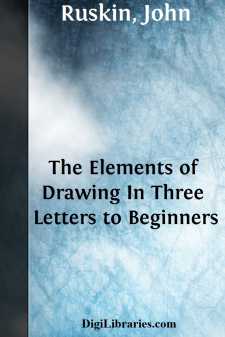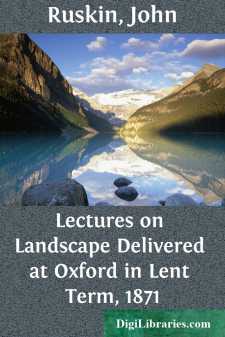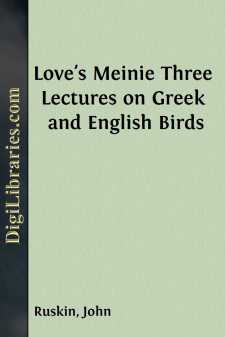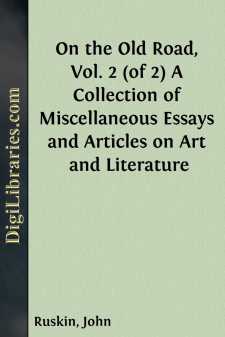Categories
- Antiques & Collectibles 13
- Architecture 36
- Art 48
- Bibles 22
- Biography & Autobiography 813
- Body, Mind & Spirit 142
- Business & Economics 28
- Children's Books 15
- Children's Fiction 12
- Computers 4
- Cooking 94
- Crafts & Hobbies 4
- Drama 346
- Education 46
- Family & Relationships 57
- Fiction 11828
- Games 19
- Gardening 17
- Health & Fitness 34
- History 1377
- House & Home 1
- Humor 147
- Juvenile Fiction 1873
- Juvenile Nonfiction 202
- Language Arts & Disciplines 88
- Law 16
- Literary Collections 686
- Literary Criticism 179
- Mathematics 13
- Medical 41
- Music 40
- Nature 179
- Non-Classifiable 1768
- Performing Arts 7
- Periodicals 1453
- Philosophy 64
- Photography 2
- Poetry 896
- Political Science 203
- Psychology 42
- Reference 154
- Religion 513
- Science 126
- Self-Help 84
- Social Science 81
- Sports & Recreation 34
- Study Aids 3
- Technology & Engineering 59
- Transportation 23
- Travel 463
- True Crime 29
The Elements of Drawing In Three Letters to Beginners
by: John Ruskin
Categories:
Description:
Excerpt
i. It may perhaps be thought, that in prefacing a manual of drawing, I ought to expatiate on the reasons why drawing should be learned; but those reasons appear to me so many and so weighty, that I cannot quickly state or enforce them. With the reader's permission, as this volume is too large already, I will waive all discussion respecting the importance of the subject, and touch only on those points which may appear questionable in the method of its treatment.
ii. In the first place, the book is not calculated for the use of children under the age of twelve or fourteen. I do not think it advisable to engage a child in any but the most voluntary practice of art. If it has talent for drawing, it will be continually scrawling on what paper it can get; and should be allowed to scrawl at its own free will, due praise being given for every appearance of care, or truth, in its efforts. It should be allowed to amuse itself with cheap colors almost as soon as it has sense enough to wish for them. If it merely daubs the paper with shapeless stains, the color-box may be taken away till it knows better: but as soon as it begins painting red coats on soldiers, striped flags to ships, etc., it should have colors at command; and, without restraining its choice of subject in that imaginative and historical art, of a military tendency, which children delight in, (generally quite as valuable, by the way, as any historical art delighted in by their elders,) it should be gently led by the parents to try to draw, in such childish fashion as may be, the things it can see and likes,—birds, or butterflies, or flowers, or fruit.
iii. In later years, the indulgence of using the color should only be granted as a reward, after it has shown care and progress in its drawings with pencil. A limited number of good and amusing prints should always be within a boy's reach: in these days of cheap illustration he can hardly possess a volume of nursery tales without good wood-cuts in it, and should be encouraged to copy what he likes best of this kind; but should be firmly restricted to a few prints and to a few books. If a child has many toys, it will get tired of them and break them; if a boy has many prints he will merely dawdle and scrawl over them; it is by the limitation of the number of his possessions that his pleasure in them is perfected, and his attention concentrated. The parents need give themselves no trouble in instructing him, as far as drawing is concerned, beyond insisting upon economical and neat habits with his colors and paper, showing him the best way of holding pencil and rule, and, so far as they take notice of his work, pointing out where a line is too short or too long, or too crooked, when compared with the copy; accuracy being the first and last thing they look for. If the child shows talent for inventing or grouping figures, the parents should neither check, nor praise it. They may laugh with it frankly, or show pleasure in what it has done, just as they show pleasure in seeing it well, or cheerful; but they must not praise it for being clever, any more than they would praise it for being stout. They should praise it only for what costs it self-denial, namely attention and hard work; otherwise they will make it work for vanity's sake, and always badly. The best books to put into its hands are those illustrated by George Cruikshank or by Richter. (See Appendix.) At about the age of twelve or fourteen, it is quite time enough to set youth or girl to serious work; and then this book will, I think, be useful to them; and I have good hope it may be so, likewise, to persons of more advanced age wishing to know something of the first principles of art....












